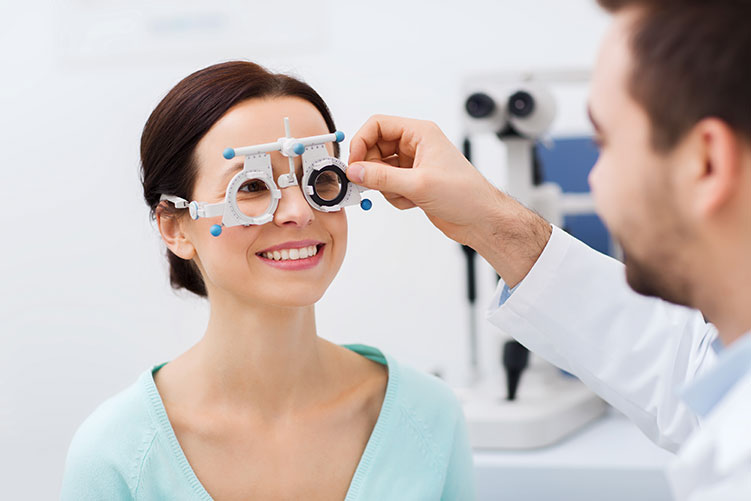Unlike a vision screening or other general eye test, comprehensive eye exams evaluate the entire health of the eye. They also help the optometrist or ophthalmologist determine your unique prescription. Comprehensive eye exams should begin in infancy to ensure proper eye and vision development. Ongoing eye health examinations at regular intervals are also important. Many eye diseases and vision changes can occur without warning signs.
What Does a Comprehensive Eye Exam Include?
A comprehensive eye exam includes testing with eye charts that help the doctor determine the sharpness of your vision. We will check your visual acuity, or how well you are able to identify details. This is generally done with charts like the Snellen eye chart.
People usually recognize this test, though they may not know it by name. With an “E” at the top and eleven rows of capital letters, the Snellen chart helps the doctor determine your visual acuity. The fourth line from the bottom is “20/20” vision. This means you can see as well at 20 feet as someone with adequate visual acuity should. Some people can see even better than this, but 20/20 is the standard. It generally means you don’t need corrective lenses to drive or do other everyday activities.
If you are unable to read the smaller lines, the doctor will ask you to determine the characters on the higher lines. From there, a starting point is determined for further testing to narrow down your unique prescription.
Why it’s Important to Get Regular Eye Exams
A thorough eye exam and meeting with a qualified optometrist or ophthalmologist is the best way to ensure eye health and maintaining your best vision possible. In addition, we believe in testing color vision and things like how well your eyes work and focus together as part of a complete eye exam.
Call us if you have any questions about your eye exam or would like to schedule an appointment with [DOCTOR NAME]!

